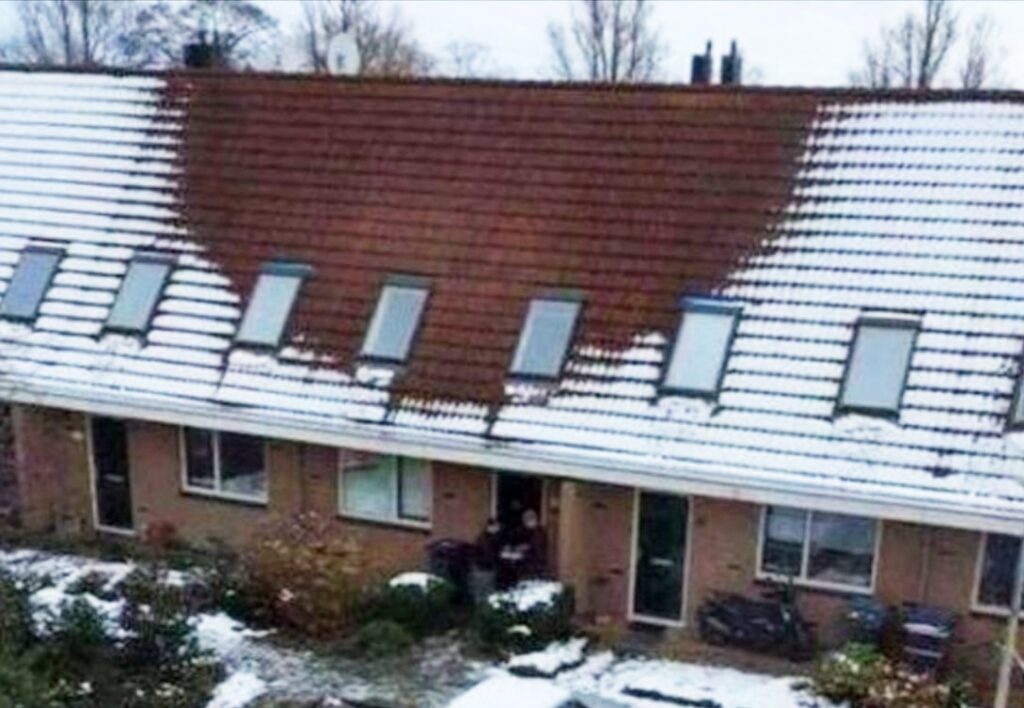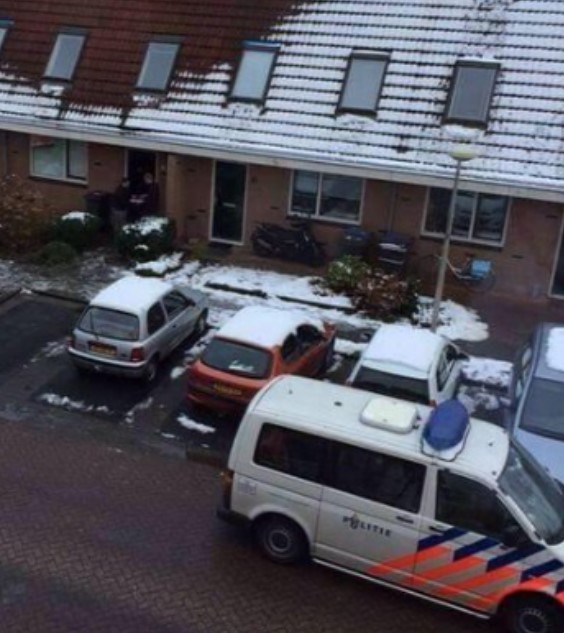It began as just another bitter winter in the Netherlands.
Snow fell thick and heavy across the country, blanketing red-brick homes and narrow streets with a soft white stillness. For most residents, it was a chance to admire the beauty of winter and complain about icy sidewalks.
But in one small village, several neighbors noticed something that didn’t quite fit the picture-perfect postcard scene.
All the houses on their street were covered in snow — except one. No matter how long the snow lasted, this house’s roof remained mysteriously bare. The rest of the neighborhood stayed frosted in white, but this particular roof looked as if winter had simply skipped over it.
At first, it seemed odd but harmless. Maybe the owners were doing renovations? Maybe they had unusual roof insulation? But as the days went on and more snowstorms passed, the difference became impossible to ignore. And in the Netherlands, there’s a well-known reason for such an anomaly — one that has nothing to do with home improvement.
The residents finally called the police.
And here’s where training came into play: Dutch law enforcement has long been taught to watch for “snow-free roofs” during winter. The reason? Large-scale cannabis cultivation.
To grow cannabis indoors on a commercial level, you need powerful lamps, heaters, and ventilation systems. These setups generate intense heat, far more than a regular household would produce. That heat escapes upward, warming the roof and melting snow almost instantly — even in freezing weather.
For police, it’s like nature’s own thermal camera.
Knock, Knock — it’s the Police
When officers arrived at the snow-free house, they didn’t have to look far for proof. Inside, they discovered a fully operational cannabis farm: rows of plants bathed in artificial light, the air heavy with humidity and the unmistakable scent of marijuana.
The grow setup wasn’t small-time. The heat generated by dozens — if not hundreds — of plants had been enough to completely alter the home’s winter profile. In other words, the owner’s roof had been advertising their secret to the entire neighborhood.
It wasn’t an isolated case. Around the same time, similar snow-related busts took place across the Netherlands. In cities like Haarlem, Zutphen, and Arnhem, police raided homes after spotting suspiciously bare roofs. One operation uncovered 88 cannabis plants hidden in a converted bedroom; another seized nearly 500 plants worth an estimated €50,000.

Public Awareness Campaigns
Following these snow-assisted busts, Dutch police took to social media and local news outlets to encourage citizens to keep an eye out. They even posted warnings urging people to report suspiciously snow-free roofs, noting that such signs could indicate large-scale illegal cultivation.
It was a rare instance where Mother Nature herself had become an ally in law enforcement. As one officer put it: “Sometimes, the snow tells you more than the people living next door.”
Why the Snow Gives It Away
The science behind this is simple but fascinating.
When snow falls, it accumulates and stays frozen if the temperature of the surface beneath remains below freezing. However, cannabis grow rooms often use high-intensity discharge (HID) lamps or LED setups that emit a lot of heat. The heat rises through the building, warming the roof from the inside out.
Even if it’s –5°C outside, the heat can be enough to melt snow as soon as it lands. This results in a roof that’s bare in the middle of winter — a striking visual when every surrounding rooftop is covered in a thick white blanket.
In some cases, the pattern is even more telling: snow will melt only over the rooms where cannabis is grown, leaving uneven patches on the roof like a thermal map for anyone looking.

The Law in the Netherlands
Many people outside the country are surprised to learn that despite its global reputation for cannabis-friendly culture, the Netherlands has strict limits on growing marijuana.
Personal use is tolerated — possession of up to five grams for personal consumption is decriminalized, and coffee shops are allowed to sell small amounts. But cultivation is another story. The law allows residents to grow no more than five plants, and even then, only for personal use. Anything beyond that crosses into illegal production and can lead to heavy fines or years in prison.
Commercial growing, like the operation found in the snow-free house, is considered drug trafficking — and the Dutch police take it seriously.
Lessons for Would-Be Growers
For those operating illegally, the takeaway is clear: snow is a liability. Some try to counteract this by improving insulation or venting heat through underground pipes, but such measures are costly and not foolproof.
In fact, police forces in other snowy countries — including the UK, Canada, and parts of Scandinavia — have also used winter weather as a tool for spotting illegal grows. The Dutch cases just happen to be some of the most publicized because of the country’s already complex relationship with cannabis laws.
The Fate of the Snow-Free House
The owner of the house that sparked the original tip-off faced serious charges for cultivating cannabis on a commercial scale. While details of their sentencing weren’t widely publicized, Dutch law stipulates that such offenses can lead to several years behind bars, especially when linked to organized crime networks.
For the neighbors, it became a story to tell — the kind that starts with, “Remember that winter when…” — a strange little mystery that began with something as innocent as watching snow fall.
Nature as Detective
The incident remains a perfect example of how everyday natural events can reveal hidden truths. A simple change in weather exposed a secret operation worth tens of thousands of euros, embarrassed a would-be drug kingpin, and gave police a ready-made case.
And for the rest of us, it’s a reminder that sometimes, the most ordinary details — a bare roof in the middle of winter — can be the start of a story about drugs, cops, and jail.
Next time it snows, you might just look at your neighbor’s roof a little differently.